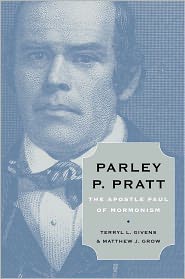
by John P. Pratt (5 Dec. 2011)
Reprinted in Meridian Magazine (27 Jan 2012).
©2011 by John P. Pratt. All rights Reserved.
| 1. New Biography |
| 2. Similarity to Paul |
| 2.1 Expositor of Doctrine |
| 2.2 New and Different |
| 2.3 World Missionary |
| 3. Martyrdom |
| 3.1 Nationwide Coverage |
| 3.2 Martyrdom Date |
| 4. What About Us? |
| 5. Conclusion |
| Notes |
What if you could read a great biography of Paul, the Apostle? What if he had left a detailed autobiography of his life, written shortly before his martyrdom in Rome? Would you like to read about his feelings while in prison, and letters to his loved ones rather than only those written to the churches? Wouldn't it be wonderful to get deeper insights into that amazing man?
We've just finished studying the letters that Paul wrote to early saints as part of the LDS Sunday School study of the New Testament this year. They comprise a large portion of that sacred volume, but those epistles leave me wanting to know much more about that man.
Wouldn't it also be nice to know more about the saints at that time and their experiences. How about reading accounts of newly baptized members standing up and singing a song in tongues, or reading of a wagon wheel running over an infant's arm and then having it healed by a priesthood blessing? Or how about reading letters from others describing their impressions of Paul, or an anecdote of their encounter with him?
 |
You might ask, "Isn't all of that covered in Parley's famous autobiography?" The answer is no. Parley's marvelous self-portrait appears to have been written only partly to tell about his life. His principal purpose seems to have been to be a witness of the restoration of the Church of Jesus Christ in the latter-days. So he included many faith promoting stories, and anecdotes which reveal the marvelous hand of God, but he left out much of his personal life. For example, he omitted much reference to his family life in plural marriage.
The book is somewhat intimidating in size, being 500 pages long, with small print. But the good news is, the last one hundred pages is filled only with detailed footnotes, so it's really only 400 pages. The book was interesting and well written, and I was grateful that they included everything they did. All that detail is needed to truly understand the big picture from various perspectives.
To me the best thing about the book was its careful attempt to avoid all bias. The authors tried really hard to just report facts, quotes from letters, diaries or other original sources, and to leave out all speculation about what people were thinking, or their hidden motives, or whether they felt that a certain revelation or action was inspired or not. That is tough to do and very few authors can even come close to that mark. And when the quotations used were biased, they did a good job of putting in quotes from both sides of the arguments. It was very refreshing.
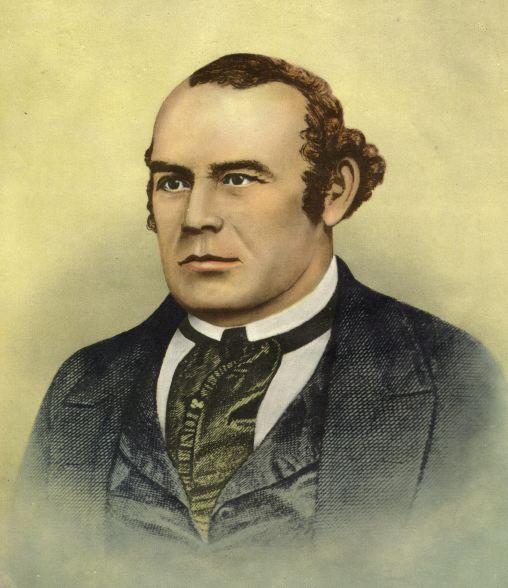 |
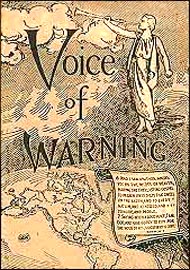 |
Givens and Grow point out that it was Parley who was the first in the restored Church to commit much of the spoken word into writing and disseminate it among the people at large through the printed word. He wrote "the first handbill, the first book of poetry, first work of fiction, the first apologetic pamphlet, and the first successful missionary book" (pp. 5-6). He was the founding editor of the Millennial Star and he wrote fifty new songs for a British hymnal (pp. 6, 179). They note that two of his books "attained near canonical status", referring to Voice of Warning and Key the Science of Theology, which stood by the standard works in nearly every LDS home.
Now we come to one of the most important similarities between Parley and Paul, and one that we might ponder today.
More than any of the other apostles, it was Paul who pointed out that Christianity was something very new and very different. Until that time "salvation" was only to the children of Israel. Jesus made it clear that he was sent only to them (Mat. 15:24). That is an extremely important point. After the Church was organized, Peter was given a revelation that meant that now the door was being opened to baptize Cornelius, the first Gentile. Peter was stunned. That was as astounding to him as being allowed to eat pork, which was also implied by the revelation (Acts 10:11-15). It was a whole new thing!
Before Cornelius, salvation was only for the descendants of Israel. To be saved, one needed to become a "Jew", including being circumcised and following all of their rituals and laws. Now the message was different. The gospel of Jesus Christ opened the door of salvation to all, whether Jew or Greek, bond or free, male or female (Gal. 3:28).
It was Paul who really picked up that ball and ran with it. When he was baptizing Greeks, the Jews in town wanted them circumcised. That is, they wanted them to become Jews. Paul made a special trip back to Church Headquarters in Jerusalem to straighten this out. Peter declared that indeed the meaning of the revelation was that people no longer had to follow the law of Moses and its rituals to be saved (Acts 15:1-20). That had been done away and fulfilled in Christ. In particular, circumcision was no longer required. The gospel of Christ was a new law, intended for all.
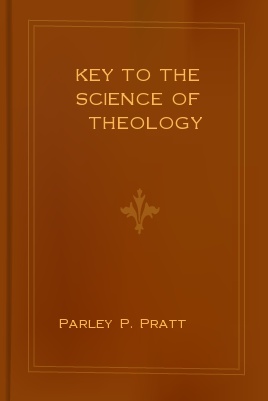 |
Most of his writing leaned in that direction. He truly emphasized that the truth had been restored and that it was very different from what people had thought. He seemed to understand at a deep level what Jesus had told Joseph Smith right from the start, "all their creeds are an abomination" (JSH 1:19). That is a far cry from, "Our Church is pretty much the same as yours." One little known pamphlet that he wrote on a slow day was entitled "Joe Smith and the Devil". It spoke of how the devil was very pleased with Christian churches, and how he only got upset when someone dared to teach that man should receive revelation directly from God, rather than following Satan's approved Christian ministers. That one was published in the New York Herald.
One notable example of Parley not being shy about differences between his religion and mainstream Christianity comes from the practice of living plural marriage. After the principle of polygamy had been publicly announced as a revelation from God, and was practiced openly, it was almost universally denounced in the national press as a barbaric practice. One prominent woman, Elizabeth Ferris, came to Salt Lake City to see for herself what was going on, in order to write an expose of what she found. She attended a dance, where she said most of the church leaders had one wife present, or were looking at their feet ashamedly. But Parley came right up to her and introduced four "Mrs. Pratt's" to her. She was then invited to come visit his home so she could see what their family life was like. She accepted the offer and was at least impressed with the sincerity of his belief and his openness to share it (pp. 327-328).
Thus, Parley emphasized the differences between LDS beliefs and traditional, rather than trying to harmonize them. In this he differed from many other apostles.
 |
It was Paul who truly picked up on the importance of the door being opened to take the gospel to the entire world. Jesus had given the commission to the apostles immediately after his Resurrection to go and teach all nations (Mat. 28:19), but it was Paul who really jumped right in and first starting traveling to the many countries of Europe. Most of what we have in the New Testament after the four Gospels is an account of the missionary work of Paul.
Parley seemed to have been born a missionary. Before the Church was even restored, he went on a mission by himself to the American Indians, to convert them to Christ. When he read the Book of Mormon, one of the first things he wanted to do was share with them the knowledge and record of their ancestors. And sure enough, immediately after he was baptized and ordained an elder in September, 1830, he was called to go preach to the Lamanites as far away as on the other side of the Missouri River (across from Independence). While he was disappointed by the reception he received by them, on the way he visited two of the principal future gathering places of the Saints: Kirtland, Ohio, and Independence, Missouri.
Parley was called on missions continually since his baptism. The biography notes that when he spent a year and a half in Salt Lake between his first and second mission to the west coast, it was one of the longest times with his family of his entire married life (p. 316). He not only had very successful missions in Europe, he was later called to be the Mission President over an area that encompassed about half of the world, namely, all the countries that border on the Pacific Ocean. That included California and all the western coast of the North America, Central America, and South America, as well as Australia, Japan and China (p. 290). Has there ever been anyone else with a larger assigned mission field? He spent time both in California and Valparaiso, Chile.
.jpg) |
They point out that while Parley was on a mission in New York in June, 1844, he had a premonition that something was very wrong back in Nauvoo, and he started home even before the martyrdom of Joseph and Hyrum. When he was on the boat coming back on the Erie Canal, Parley reports that "Great excitement prevailed on board, there being a general spirit of exultation and triumph at this glorious news" of the murders of Joseph and Hyrum. Why was everyone so happy? Apparently they believed that these two men were so evil that it was right to murder them before their trial! Parley relates that he silenced the bloodthirsty crowd by declaring that "a MAN never triumphs and exults in the ruin of his country and the murder of the innocent" (p. 221).
It is well known that Joseph Smith's name was in headlines around the country, and that his death was declared a great victory. But what about Parley? Was he just murdered on a dark road in Arkansas, left with not even a marker of his grave? Givens and Grow fill in the rest of the story with such wonderful detail and quotations that it was impossible for me to put the book down until that chapter was finished! It is an amazing story.
They point out that Parley was also portrayed in national news as having seduced the wife of poor Hector McLean in San Francisco and run off with her to Salt Lake City. The story went on that the victim husband had sent the children to New Orleans to their grandparents to protect them from being taught the evils of Mormonism. His brainwashed wife Eleanor then left her seducer in Salt Lake City to kidnap her children, but McLean had come to the rescue and saved them from her. He was now after the wicked Parley and local police were participating in a nationwide hunt to arrest Parley for all these evil deeds.
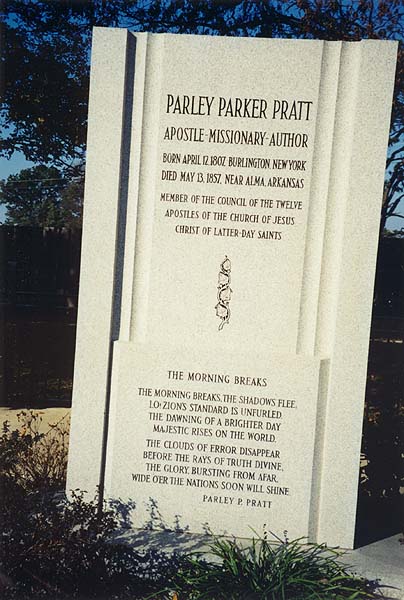 |
Parley had planned to meet Eleanor, who had become Parley's twelfth wife, and help her get her children back to Utah with him. McLean had intercepted Parley's note of instructions to her on where to meet, so the law closed in and captured them both.
Eleanor could not have been charged with kidnapping her own children, so she was accused of stealing their clothes! After she was acquitted of that, McLean tried to have her committed to an insane asylum for having been crazy enough to become a Mormon, but she escaped and found her way back to Utah safely after she ran into Porter Rockwell, who was going that way with news of Johnston's Army coming to Utah (p. 386).
As for Parley, he was acquitted of all charges. The judge and many others knew that McLean was planning to murder him, and had known he had no real case against the apostle, so on the morning after the trial the judge helped Parley to escape. McLean did indeed catch up with Parley and when all his bullets missed, he stabbed the unarmed Parley to death. As he died, Parley was able to identify his murderer to neighbors who tried to help. He was coherent to the end, and was able to leave a dying testimony of Christ and that he had died as a martyr for his religious beliefs (p. 383).
No action was taken against the murderer. Public opinion was almost entirely on his side, having being swayed by newspaper accounts. In fact, McLean bragged about his deed, and wrote an account of how he accomplished it in the San Francisco Alta California newspaper. There he matter-of-factly stated, "I killed him.... I look upon it as the best act of my life." Givens and Grow concluded that "most Americans concurred" with him (p. 387). Is this not a direct fulfillment of the words of Christ to his apostles, "the time cometh, that whosoever killeth you will think that he doeth God service" (John 16:2)?
Many of the great religious leaders have sacred events in their lives occur on holy or significant days on a certain sacred calendars. Often a martyrdom date will have special significance. For example, the religious reformer John Huss, who was the inspiration for Martin Luther, was burned at the stake on a sacred day on five separate sacred calendars, as was discussed in a former article.
 |
Of the twenty pictures, the sixth is a skull which represents death. The day on which Parley died was the day of the Skull. The chance of that happening is one in twenty, which is the usual limit that statisticians use to declare a coincidence to be statistically significant.
Of the thirteen numbers, it is the number six which represents death. Parley also died on that day. Native Americans refer to the two cycles together, and the day is called "6 Death". That day only occurs once in 260 days, so now the odds of that occurring by chance are 1 in 260.
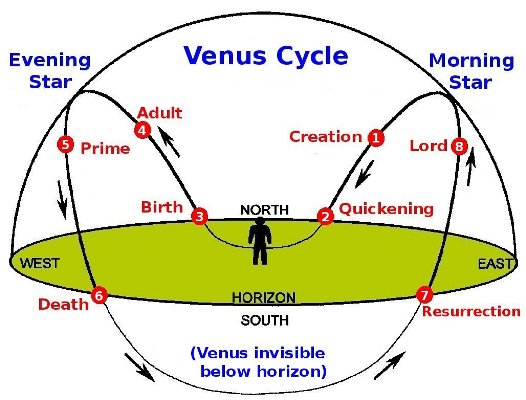 |
The day on which Parley was martyred was the day "6 Death" on the Venus calendar, meaning it was the sixth day of the thirteen assigned to Death in the cycle. The day 6 Skull (Sacred Round) only occurs on 6 Death (Venus) one time in 45. That means there is only a 1 in 11,700 (45 x 260) chance that any given person's death date would fall on such a perfect death date on both the Sacred Round and the Venus Calendar. To me, the odds of that happening for such a great religious leader as Parley are way beyond chance and hence extremely significant. Moreover, it seems appropriate that Parley, whose love for Native Americans had been deep all his life, should have the sacred calendars involved at this martyrdom be two that were most significant to the those people.
Why read a biography at all? Is not one reason so that we can learn the lessons of others and apply them to our own lives? So what about us? How would we have done when faced with what Parley was faced? Or perhaps even better, we could ask how would we have done if we were in the audience judging Christ, or reacting to the martyrdom of Joseph Smith, Paul or Parley?
Have you ever wondered whether or not you would have been been crying out with the crowd that Jesus should be crucified? What's that you say? "What a rude question! Of course I'd have been on the side of the Savior!"
.jpg) |
And what about Paul? What if you had been an typical Roman, who had seen your beautiful city burned in A.D. 64? What if you heard your Emperor Nero announce that it has been discovered the it was the Christians that were responsible for the burning? What if he said that he was going after not just those who were responsible, but that he was declaring war on all such Christian terrorists, and that all Christians would be publicly executed? What if it were announced that a key Christian leader had been apprehended and his execution set. Would you have been there cheering because you trusted your leaders, rather than consulting your Inner Light?
Compare that to what most Americans were told a century and a half ago by the press about the awful dictator Joseph Smith, who was leading gullible people away into slavery and had a huge militia to police his empire. And everyone "knew" that Parley Pratt was seducing helpless women away to become part of his harem. Perhaps it is not surprising that many people condoned their murders.
It might be useful to note something about the comparitive unlawfulness of these four deaths. As far as I know, the execution of Paul was totally lawful. By that I mean he was apparently tried, found guilty and executed. The Savior's judges found no guilt in him, but Pilate gave in to public demand and had him crucified anyway. Joseph Smith was murdered before his trial, but no one ever claimed responsibility, and no one was charged for the crime. The case of Parley, however, seems the most unlawful of all, especially in the United States. He was murdered immediately after being acquitted, the murderer published an account of how he did it in the newspaper, and yet he was never charged. To me these are all things to ponder, again asking just how each of us might have responded, if we had not known any of the martyrs personally, but had just seen the media coverage of each event.
The new biography of LDS apostle Parley P. Pratt by Givens and Grow shows excellent scholarship, reads easily, and provides valuable insights into the life of the subject, not included in his autobiography. The comparison of Pratt to the Apostle Paul is well justified and provides an interesting perspective to consider the life of this great man.